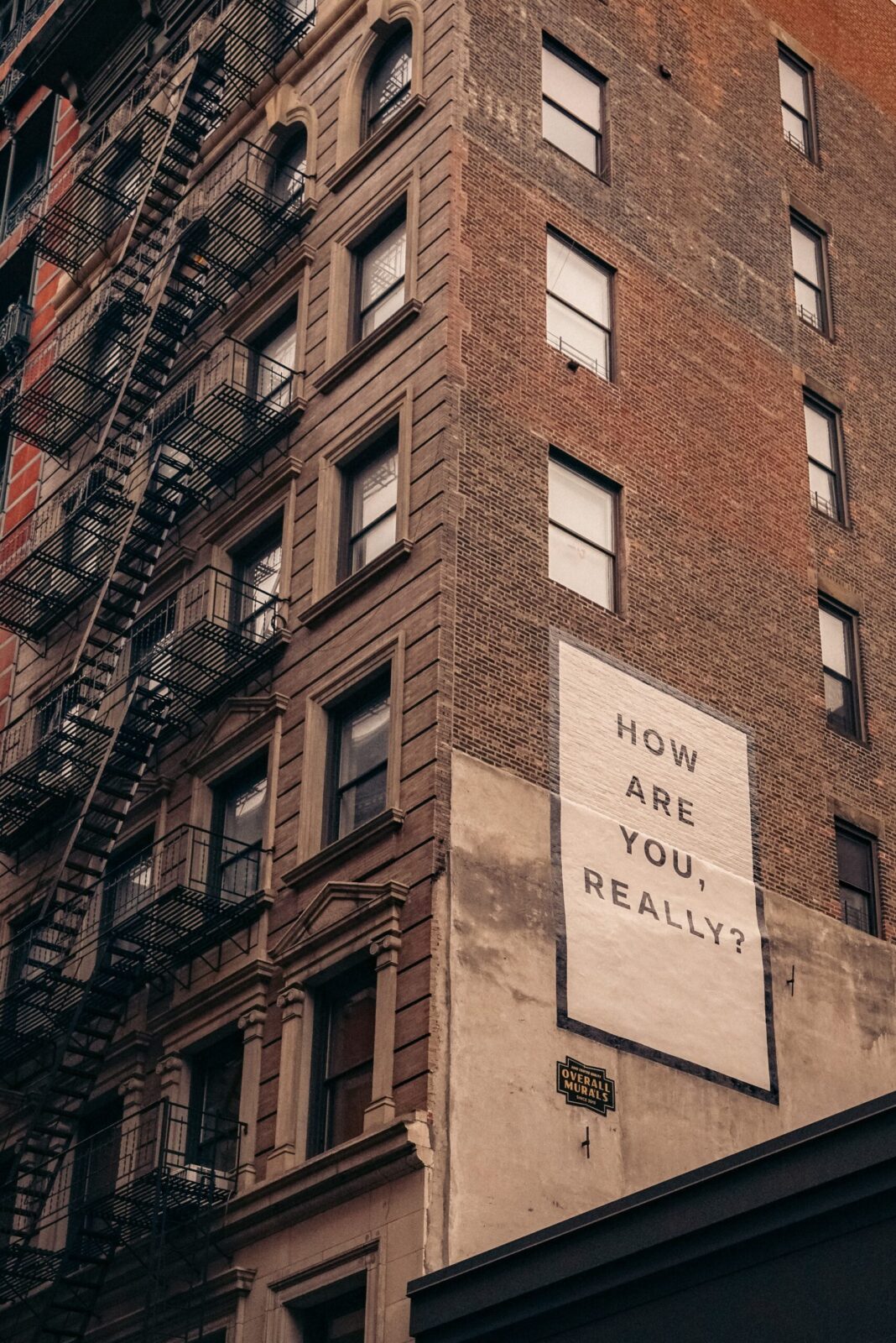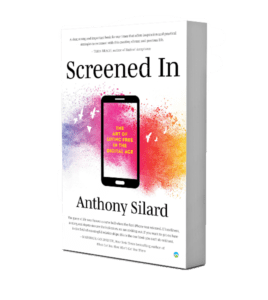How to Be Anxious without Becoming Depressed
According to a recently released CDC survey, anxiety levels in the US are, on average, triple what they were a year ago. During the pandemic, many of us are experiencing not only anxiety, but also depression. Are the two related?
To understand the difference between anxiety and depression, we must first understand that both are emotions. According to the Dutch philosopher Spinoza, “Emotion, which is suffering, ceases to be suffering as soon as we form a clear and precise picture of it.” If we can better understand each of these emotions, we are less likely to suffer from them.
Therein lies our challenge. Let’s dig in.
To understand the difference between anxiety and depression, we first need to understand the component of every emotion that goes by a variety of names essentially meaning the same thing: arousal, activation or intensity. The arousal component of an emotion essentially refers to how strongly we feel an emotion.
In fact, the word “emotion” derives from the Latin motere, which means “to move”—a derivation that suggests an emotion stimulates an impulse to take action. In the early twentieth century, Freud believed that emotions provide cues about how an individual is responding to their environment. Consistent with Freud, over a half century later the University of Amsterdam psychologist Nico Frijda found that emotions are linked to a change in an individual’s readiness for action.
If you reflect on how emotions have become wired into our physiology, this explanation makes sense. When an individual perceives a threat in their environment, an emotion focuses their mind and narrows their perceived action repertoire (e.g. fight in response to anger or flight in response to fear) and produces physiological changes to support those specific actions (e.g. increased blood flow to the largest muscles when fear is experienced).
This explanation helps explain the evolutionarily adaptive value of emotions, as the tendency toward specific actions in the face of a threat induced by certain emotions increases our chances of survival. It is for this reason that the psychologist Paul Ekman found that, across various cultures, anxiety is an innate and necessary emotion for healthy human functioning.
Consider our hominid ancestors on the wide-open plains: we’ve never physically been A predators, and our happy-go-lucky forebears who whistled a tune instead of feeling anxiety did not possess the internal physiological system that signals the presence of danger, and were likely the first eaten.
Hence, every emotion contains an arousal or activation component that relates to how strongly an emotion stimulates an individual to take action. Anxiety can be either a low- or high-arousal emotion, depending on how strongly it is experienced. The stronger we perceive a threat in our environment, the higher our level of anxiety.
To understand anxiety as an emotion, we must understand how an emotion comes into existence. As the Berkeley psychologist Richard Lazarus lays out in his foundational research on emotion, we are constantly evaluating people, situations and events around us to determine if they are facilitating or obstructing our goals, values and interests.
These continual evaluations determine the valence of an emotion—whether it is positive or negative. If we appraise the person, situation or event as facilitating our goals or values, we experience a positive emotion such as joy, gratitude or exhilaration.
If, on the other hand, we assess the person, situation or event to be hindering us from realizing a goal or value, we experience a negative emotion—such as anger, sadness or, yes, anxiety. This primary evaluation—Is this person, situation or event good or bad for me?—produces a primary emotion. (Four of the five primary emotions were featured in the Pixar film Inside Out: joy, anger, sadness and fear. Interestingly, the fifth primary emotion, love, was left out of the film.)
After we experience a primary emotion, we then make a secondary evaluation—Do I have the internal resources to cope with this person, situation or event? We assess our own capacity to handle whatever it is that has stimulated the negative emotion afflicting us.
Both anxiety and depression are responses not just to a primary evaluation that a person, situation or event is obstructing our goals or values, but also to a secondary evaluation about whether we can handle it. It is in the secondary evaluation that these emotions diverge.
In the case of anxiety, we believe that we can do something to reduce the power of the threat and set our lives back on track. With depression, on the other hand, we don’t hold such a belief. In other words, we become depressed once we have given up hope that we can cope with the person, situation or event.
Not a wise idea. In the fourteenth-century epic poem Inferno, Dante Alighieri describes an allegorical trip through purgatory. The sign inscribed on the door as he enters hell is very telling: Lasciate ogne speranza, voi ch’intrate (“Abandon all hope, ye who enter here”). The Uruguayan proverb “Hope is the last thing we lose” reinforces the words of the Italian poet.
When no hope remains, we pass through this door into a hell on earth, which no person merits. This is depression: a disconnection from both your external (i.e., work and social relationships) and internal (your self-relationship) worlds because you don’t believe there is any viable action you can take to return your life to where you wish it to be.
Looked at in this light, anxiety, believe it or not, inspires hope. The reason we feel anxiety is we still believe there is something we can do to ameliorate the situation causing it. On some level, sometimes subconscious, we feel we can improve our lot.
Rather than perceiving anxiety as a feeling to be avoided, then, we can see it as it is: a positive catalyst to defend ourselves from a low-level, yet ominous, threat in our lives. We can recognize that it’s only when anxiety goes unchecked and becomes unmanageable that it becomes dysfunctional.
Depression, on the other hand, is a low-arousal emotion because we have let go of this belief that we can take specific actions to reduce the threat and move our life in a better direction. We feel there is nothing left for us to do.
Let’s keep in mind, then, that we only feel anxiety when a person, situation or event in our environment concerns us and we feel there is something we can do to manage it. If we were to feel it was beyond our control, we would no longer feel anxiety. Instead, we would feel either acceptance (if we felt it was something we could gracefully live with) or depression (if we felt it wasn’t).
During this pandemic, we must accept that we cannot change what has already transpired (e.g., the past trajectory of the virus and the poor responses to it by many governments). On numerous levels—economic, political, social, psychological, physical (health)—we can now transform anxiety into acceptance (of what has already occurred), ambition (to bring about the better world we know is possible) and action (to make it happen, starting today).
To better manage our anxiety during the largest public health crisis of our lifetimes, let’s take to heart the fundamental difference between anxiety and depression: Depression is anxiety that has given up hope. Rather than letting go of our belief in our capacity to cope with hardship, let’s balance acceptance, ambition and action to bring about a better society for all of us sharing this planet.
What helps you prevent your anxiety from becoming depression? Please let us know in the comments.





There Is 1 Comment
erotik izle11-15-2020
Great, thanks for sharing this article post. Much thanks again. Fantastic. Winnifred Herve Inesita
Comments are closed.